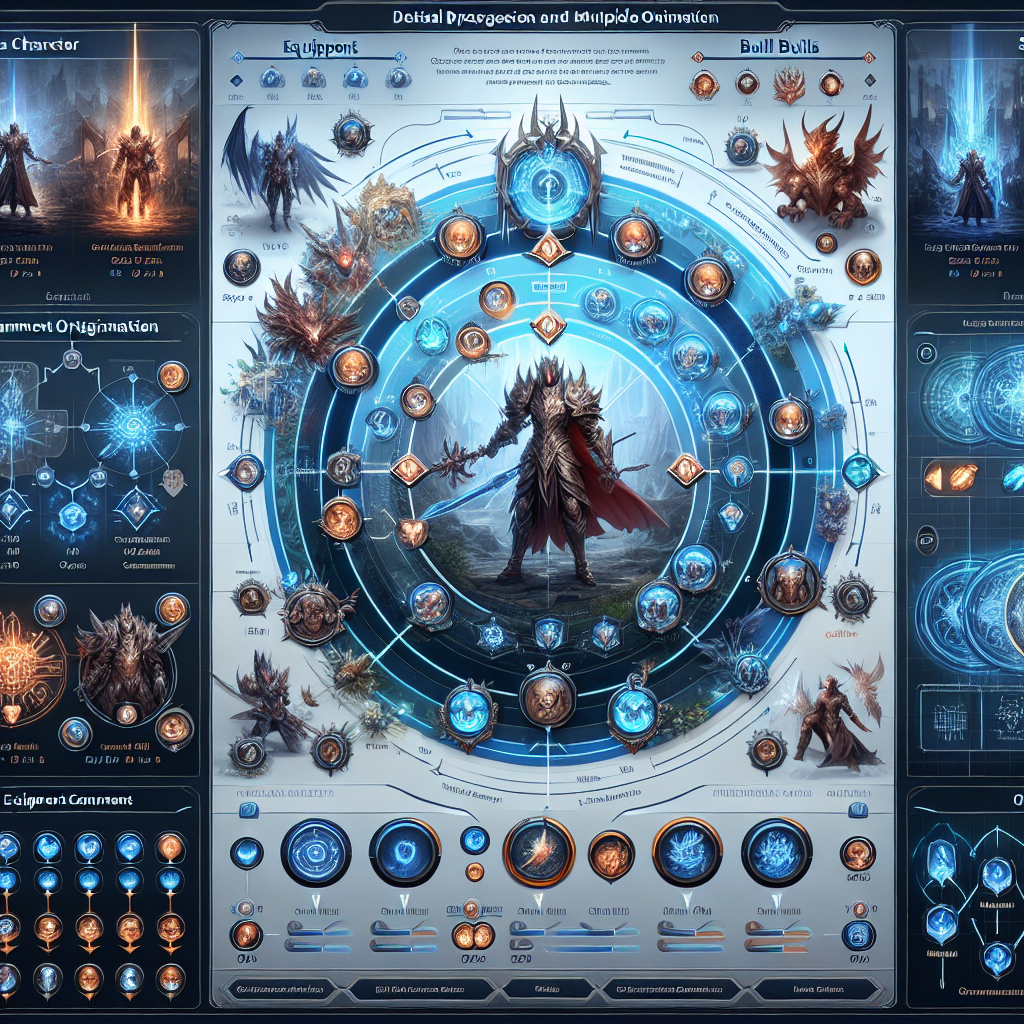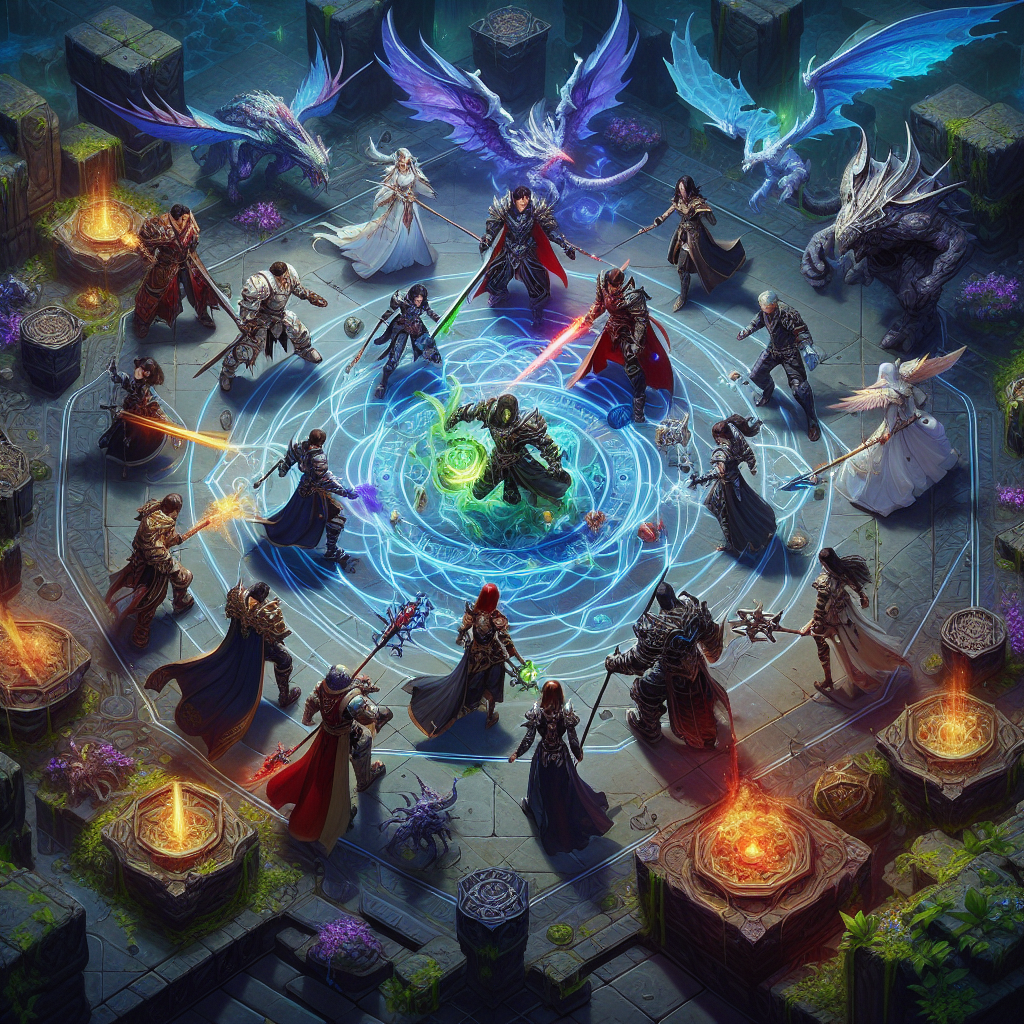Where Stories and Systems Clash: Navigating the Tension Between MMO Lore and Gameplay
In the vast and immersive world of massively multiplayer online (MMO) games, the interplay between narrative depth and engaging gameplay mechanics is a delicate dance that developers must masterfully choreograph. As players delve into these virtual realms, they often find themselves captivated by the rich tapestry of lore and world-building, only to confront the harsh realities of game systems that can sometimes feel at odds with the storytelling.
This tension between the narrative and the mechanics is a challenge that MMO creators have long grappled with, as they strive to strike a balance that satisfies both the players' craving for an immersive experience and their desire for satisfying, well-designed gameplay. In this comprehensive exploration, we'll dive into the heart of this conundrum, examining the nuances of how game stories and systems can clash, and the strategies developers employ to harmonize these disparate elements.
Establishing the Narrative Foundation
At the core of every successful MMO lies a rich and captivating narrative that serves as the foundation for the game world. This narrative, often referred to as the "lore," encompasses the history, factions, characters, and overarching themes that shape the player's experience. Developers invest significant time and resources into crafting these intricate stories, drawing inspiration from mythologies, legends, and their own creative visions.
The Power of Lore in Immersion
The lore of an MMO is a crucial factor in fostering player immersion and engagement. When players feel deeply connected to the world they inhabit, they are more likely to become invested in the story and the choices they make within it. Lore can provide a sense of context, purpose, and emotional resonance, allowing players to feel like they are part of a living, breathing universe.
Balancing Lore and Gameplay
However, as players delve deeper into the game, they inevitably encounter the practical realities of the gameplay systems that govern their interactions. These systems, designed to create a challenging, rewarding, and balanced experience, can sometimes clash with the narrative elements, leading to a disconnect between the story and the player's actions.
This disconnect can manifest in various ways, such as:
- Gameplay mechanics that contradict or undermine the lore (e.g., a peaceful faction engaging in endless player-versus-player combat)
- Repetitive or grindy tasks that feel at odds with the game's overarching narrative
- Narrative elements that fail to provide meaningful impact on the player's in-game experience
The Challenges of Aligning Lore and Gameplay
Reconciling the tension between lore and gameplay is a significant challenge for MMO developers, as they must balance the need for engaging mechanics with the desire to maintain narrative coherence and player immersion.
Diverging Design Priorities
The development teams responsible for crafting the game's narrative and those focused on designing the gameplay systems often have different priorities and perspectives. Narrative designers may prioritize storytelling and world-building, while gameplay designers are more concerned with creating a seamless and balanced player experience.
This can lead to a disconnect, where the narrative elements may be perceived as secondary to the gameplay, or vice versa. Striking a harmonious balance between these two vital components requires effective communication, collaboration, and a shared understanding of the game's overarching vision.
Technical Limitations and Constraints
In addition to the design challenges, MMO developers must also contend with technical limitations and constraints that can further complicate the alignment between lore and gameplay. The sheer scale and complexity of these virtual worlds can make it difficult to ensure that every narrative element is fully reflected in the game's systems.
- Limitations in AI and scripting capabilities may prevent NPCs from behaving in ways that align with their lore-based personalities and motivations.
- Technical limitations in the game engine or server infrastructure can restrict the scope and scale of narrative-driven events or interactions.
- The need to maintain a consistent and balanced gameplay experience can lead to compromises in the narrative, as developers prioritize functionality over storytelling.
Player Expectations and Preferences
Another significant challenge in aligning lore and gameplay lies in the diverse preferences and expectations of the player base. While some players may prioritize immersive storytelling and world-building, others may be more focused on the gameplay mechanics and the competitive or progression-driven aspects of the game.
Balancing these divergent player needs can be a delicate and complex task, as developers must find ways to satisfy both the lore enthusiasts and the gameplay-focused players without alienating either group.
Strategies for Harmonizing Lore and Gameplay
Despite the inherent challenges, MMO developers have developed various strategies and techniques to better harmonize the narrative and gameplay elements within their games.
Narrative-Driven Gameplay
One approach is to design gameplay systems that are directly informed and driven by the game's lore. This can involve creating quest lines, NPC interactions, and in-game events that are tightly integrated with the narrative, ensuring that the player's actions and choices have a meaningful impact on the story.
By weaving the gameplay mechanics into the fabric of the lore, developers can create a more cohesive and immersive experience, where the player's actions feel aligned with the underlying narrative.
Flexible and Adaptive Lore
Another strategy is to design the game's lore with a degree of flexibility, allowing it to adapt and evolve in response to player feedback and the changing demands of the gameplay systems.
This approach recognizes that the narrative and the gameplay are not static elements, but rather dynamic components that must be constantly refined and adjusted to maintain a harmonious balance. Developers can leverage player feedback, monitor gameplay patterns, and make incremental updates to the lore to ensure that it remains relevant and cohesive with the game's systems.
Narrative Layering and Modularity
MMO developers can also employ a technique known as "narrative layering," which involves presenting the game's lore and storytelling at different levels of depth and engagement. This allows players to choose their level of narrative immersion, with some focusing on the overarching themes and grand narrative, while others delve deeper into the rich tapestry of world-building and character development.
Additionally, a modular approach to narrative design can help mitigate the tension between lore and gameplay. By breaking down the game's story into smaller, more manageable components, developers can more easily integrate these narrative elements into the gameplay systems, ensuring a tighter alignment between the two.
Embracing Player-Generated Narratives
In recent years, some MMO developers have embraced the concept of player-generated narratives, allowing the game's lore and story to be shaped and expanded by the actions and experiences of the player base.
This approach recognizes that players can be powerful storytellers in their own right, and by empowering them to contribute to the game's narrative, developers can create a more dynamic and engaging experience that resonates with the community.
Transparent Communication and Feedback Loops
Finally, effective communication and feedback loops between developers and players can play a crucial role in harmonizing lore and gameplay. By actively engaging with the community, soliciting feedback, and addressing player concerns, developers can gain valuable insights into the areas where the narrative and gameplay may be misaligned, and make the necessary adjustments to improve the overall experience.
Key Takeaways
In the captivating world of MMOs, the balance between lore and gameplay is a delicate and complex challenge that developers must continually navigate. By understanding the inherent tensions, embracing flexible and adaptive narrative design, and fostering open communication with players, MMO creators can strive to create experiences where the stories and systems seamlessly intertwine, immersing players in a truly captivating virtual realm.
Final Thoughts
As the genre of MMOs continues to evolve, the need to harmonize lore and gameplay will only become more crucial. By learning from the strategies and techniques employed by industry leaders, and by fostering a culture of creativity and collaboration, developers can unlock new possibilities for crafting deeply engaging, narratively rich, and gameplay-driven virtual worlds that captivate and inspire players for years to come.





